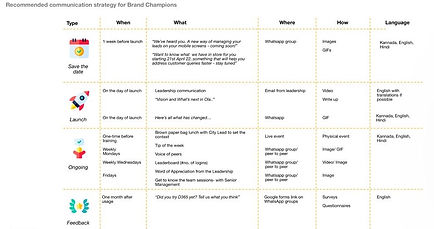To comply with my non-disclosure agreement, I have omitted and obfuscated confidential information in this case study. This is not the entire research, only select insights have been mentioned here.
THE CHALLENGE
Automating backend processes for one of the world's largest ride hailing and mobility platform
Nearly half of the organisation's backend processes were being executed manually or semi-automatically [at the most]. This was proving to be a major hurdle for client's new business vertical of reselling [used] cars. Further,
-
The growth of used car market segment has been attributed primarily to increased penetration of the internet in India; and
-
Speed and accuracy in handling customer queries is a strong foot of the current car reselling platforms in this segment
Therefore it was crucial to automate and monitor the processes
WHAT DID THE CLIENT ASK FOR?
Client's brief was- ERP enablement to streamline the backend processes. The timeline for end to end research [from planning to execution] was of 5 weeks. To proceed I decided to list down the priority ERP modules that will feed into process transformation, CRM; and for running the adoption campaign.
MY ROLE IN THE PROJECT
Engagement partner Program manager Co-manager UX lead Researcher
I was co-managing and leading the CX aspect. The team size was 8. Key tasks were:
-
Defining scope of the project
-
Creating end to end research, workshop and adoption plan
-
Supervising creation of interview questionnaire, interviews
-
Leading analysis, need gap assessment
-
workshop with the client and PwC partner teams [~100 people]Planning and facilitating
-
Creating adoption plan and communication strategy
THE APPROACH
Interviews. Surrogate empathy. Service design. Adoption strategy
Owning to paucity of time, research planning began with priority mapping to meet the deliverables in time:
Procurement
Inventory management
Order management
Warehouse management
Workforce management
CRM


Identify user pain points
Empathising with the employees, understanding the process and taking their view on the key challenges across the current service life cycle
Service lifecycle assessment to address operational gaps
Conducting rigorous ideation and brainstorming to identify current gaps in delivery and the best possible solutions to address them while maintaining a human-centric approach
Pilot solutions that clear the DVF assessment
-
Prototyping to identify the solutions that can resolve the problem
-
Going back to ideation if no solution meets expectations
-
Testing a wider rollout by releasing the prototyped solution to a broader group of customers
What is? What if? What wows? What works?
Set clear expectations against the scope
CX transformation effort Defining the problem that the CX transformation will solve can help in setting reasonable expectations
Ideation workshops with the employees
Empathising with different teams and team leads to understand their key concerns
-
Defining and deriving consensus on the actual problem and ideating by brainstorming to establish a path of least resistance to go forward
Launch, monitor, and scale
Start with UATs followed by silent launch of Phase 1. Monitor onboarding, usage frequency, abandonment. Run persona wise tailored programs as per the agreed calenderised adoption strategy

The vantage point to understanding the current service design was from a customer's point of view. Therefore, the first step was to map all the possible interaction points [direct & indirect] that car sellers and purchasers might come across


After mapping the interaction points, I started to interview the employees to create service journeys to understand procurement of cars from the customers, inventory management and the reselling process. I also spoke with some of the customers to validate/hear their side of the service journey. The information from both the parties was put together a rounded journey. The pain-points were highlighted.


This was done using the Desirable- Viable- Feasible framework in collaboration with stakeholders and PwC Experience & Tech consulting. 23 paint-points with solutions were delivered within 4 weeks. The solutions were then planned and built into different phases. More urgent CX paint-points as agreed upon with the clients were resolved in the first and second release [R1, R2]




Last leg of the project was to plan Microsoft Dynamic adoption with the aim to automate processes for the main branch and the central warehouse within 3 months from the date of first release. 9 employee profiles were identified based on the higher frequency of their direct or indirect interaction with the customers. A hi-level calendarised plan for communication launch was designed for 4 release phases. A detailed communication strategy tailored for each of the 9 employee personas was prepared




Towards the end, customised ERP enablement toolkit was shared. It consisted of:
Super users training guide and response sheet
Animated module wise product overview/user guide
Training workshop deck
UAT survey templates for 4 release phases
CSAT survey template
